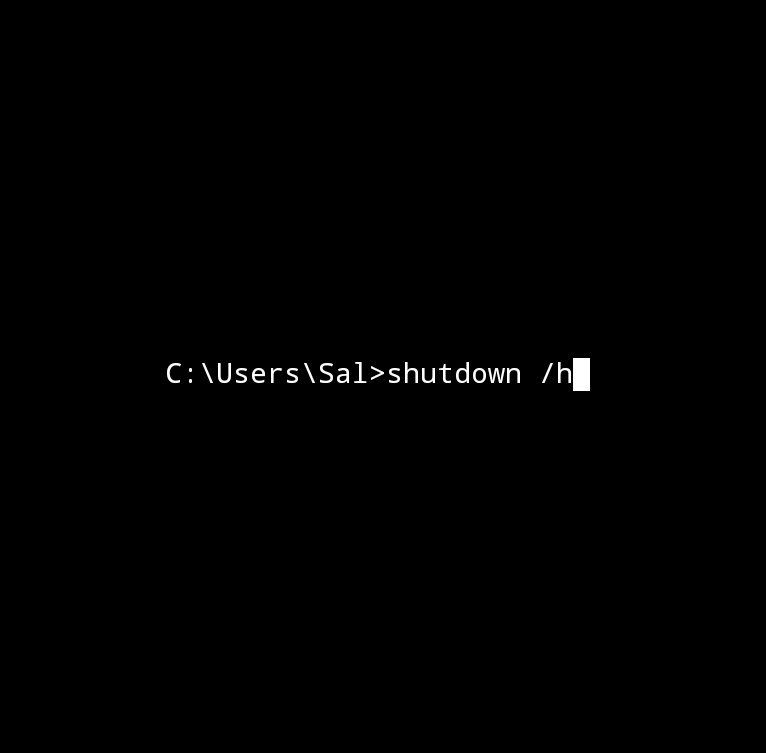I have an HP Stream 11 that I want to use for word processing and some light web browsing - I’m a writer and it’s a lightweight laptop to bring to the library or coffee shop to write on. Right now it’s got Windows and it’s unusable due to lack of hard drive space for updates. Someone had luck with Xubuntu, but it’s been a few years and it seems like Xubuntu is no longer trying to be a lightweight distro for use cases like this.
My experience with Linux is very limited - I played around with Peppermint Linux a bit back when it was a Lubuntu fork and I used Ubuntu on the lab computers in college. I can follow instructions to make a live boot and I can do an apt-get (so something Debian-based might be best for compatibility and familiarity) but I mostly have no idea what I’m doing, lol. I used to do DOS gaming as a kid so having to do the occasional thing via command line isn’t going to scare me off but I’m not going to pretend to have knowledge I don’t. I’m probably going to go with Mint on my gaming laptop next year but I suspect it’s not the best choice for my blue bezeled potato (although I might try it anyway).
I second Debian with LXDE. I run it on much older hardware with no issue.
Just something to note, LXDE is no longer officially maintained by the original devs (there are some community maintainers). LXQt is the new project from those devs and still seems to be going strong.
Not saying to avoid LXDE, just that updates may be few and far between.
I didn’t know that. I usually recommend LXDE because I have used it for a really long time. LXQt is also a great option, I haven’t used it in a few years but I remember it being nice and lite.
Debian-based potatoe Linux is AntiX.
IIRC antix doesn’t use systemd, right? I don’t want to argue about systemd, but it may be frustrating for a new user trying to follow tutorials that say to use systemctl.
I have debian 32bit running on my extremely underpowered 2009 eeepc - 1.6ghz atom, 1gig ram. Cinnamon as DE
It’s up to date as well.
Websites are pretty useless but it works well as a music server and can digitise my vinyl with several plugins without dropping any packets.
With 2gig you’ll be able to browse the web
Debian + xfce.
This is probably the way to go. Relatively minimal install with a pretty lightweight DE. Rock-solid-stable too, so even if you update obsessively, you’re very unlikely to ever need to downgrade anything.
I actually went with this setup on a Dell M4500 and it works a treat, really gave the ol gal a second lease on life.
Devuan + xfce.
Devuan
Just no. Systemd can get more efficient than running hundreds of poorly integrated scripts and daemons to have a working system.
Note: this comment is long, because it is important and the idea that “systemd is always better, no matter the situation” is absolutely dangerous for the entire FOSS ecosystem: both diversity and rationality are essential.
Systemd can get more efficient than running hundreds of poorly integrated scripts
In theory yes. In practice, systemd is a huge monolithic single-point-of-failure system, with several bottlenecks and reinventing-the-wheel galore. And openrc is a far cry from “hundreds of poorly integrated scripts”.
I think it is crucial we stop having dogmatic “arguments” with argumentum ad populum or arguments of authority, or we will end up recreating a Microsoft-like environment in free software.
Let’s stop trying to shoehorn popular solutions into ill suited use cases, just because they are used elsewhere with different limitations.
Systemd might make sense for most people on desktop targets (CPUs with several cores, and several GB of RAM), because convenience and comfort (which systemd excels at, let’s be honest) but as we approach “embedded” targets, simpler and smaller is always better.
And no matter how much optimisation you cram into the bigger software, it will just not perform like the simpler software, especially with limited resources.
Now, I take OpenRC as an example here, because it is AFAIR the default in devuan, but it also supports runit, sinit, s6 and shepherd.
And using s6, you just can’t say “systemd is flat out better in all cases”, that would be simply stupid.
“systemd is always better, no matter the situation” is absolutely dangerous for the entire FOSS ecosystem: both diversity and rationality are essential.
I agree with this, however the rest is more open to discussion.
Systemd might make sense for most people on desktop targets (…) “embedded” targets, simpler and smaller is always better.
A few years ago I was working on a bunch of “embedded” devices (4 x ARM @ 800 Mhz + 256MB of RAM) and whatever we the popular alternatives and the truth is that only with systemd we were able to boot and have a usable system (timers, full dual stack DHCP/SLAAC networking network time, secure DNS) without running out of resources for our daemons later on.
The issue with sysvinit and OpenRC etc. isn’t that they aren’t good, it is that they’re simply init systems and nothing more. In order to have just the bare features above we would have to depend on tons of other small packages and daemons that would all eat up RAM and deal with all the integration pain because they weren’t designed to work together. Are you aware of the pain and number of things you’ve to setup to just have dual stack networking? With systemd you cut a lot of those smaller daemons and end up a few that have a much smaller RAM footprint and are actually made to work with each other.
Systemd also providers very useful features like socket activated services in that can be leveraged to have the system wait for incoming connections and once it gets one launch a program. Without systemd it would’ve been one more constantly running daemon. It also provided us the ability to monitor if all required services were running, kill things going over the line, restart on specific conditions and even trigger alerts.
Yes, you can do all of the above without systemd but the amount of stuff it required didn’t fit our 256MB target, nor the power budgets - we tried it, trust me. Besides all that without so many moving parts and by relying on systemd our solution was way more robust and easier to develop / debug.
For the record. OpenRC is the default on Alpine Linux, which is probably run on millions of Docker installations.
And Docker initially used Ubuntu. They explicitly and specifically switched to Alpine in 2016 for performance, to minimise the overhead.
Linux Mint Debian Edition XFCE like someone else said already.
On a second note, maybe you’ll find the program Scribus of interest to you.
But why?
You want to use Mint because it’s better Ubuntu with cinnamon. Other DEs are far less polished because they focus on the one they’re developing.
MX is Debian with xfce and some extra tools to make Debian more user friendly for desktop use. It’s superior in every way.
Wrong question, distro doesn’t matter ;). Just go with Debian or Arch or something else that don’t preinstall crap.
What matters is what programs you use, including the graphical environment.
Debian and xfce, easy
It’s been some time since I used it on an old laptop, but Puppy Linux was very responsive on shit hardware.
Puppy Linux was my first ever Linux distro. Great memories.
if it supports the basic hardware, there’s nothing wrong with peppermint for basic stuff like your use case. after the base system is installed, add a browser and libreoffice and you’ll have a nice little system for writing on.
if you want to keep using windows on it, you’ll probably have to ‘start over’ with a plain install of windows (without hp’s junk, and to a clean–partition table cleared–‘hard drive’), uninstall the useless crud like candy crush that comes with the base windows install, ensure compactos is enabled (it should be automatically enabled with those specs), install your browser and word processor. you shouldn’t have to do thing where you connect an external drive for ‘working’ space for updates (something i’ve only ever had to do twice on 32gb emmc models) anymore as long as updates stay relatively current.
but with only 2gb ram and a 10 year old ‘atom’ based cpu, i’d probably go straight for peppermint.
Definitely Linux Lite run on a potato. Maybe you should try it
Someone should come up with a new distro with the name potatOS, just for cases like this .
There’s already a bunch of distros for lower-end hardware. PuppyLinux is probably what you’re looking for, and it’s actually a genre of distro that takes a typical distro like SUSE, Debian, Ubuntu, Fedora, Arch etc. and packages it into a slimmer spin with some shared utilities.
Linux Mint Debian Edition. If you want to go more minimal, try Debian.
With only 2GB of RAM, you will need a very lightweight distro. Something like antiX would probably run well. It will probably have trouble with a web browser like Firefox or chrome. There are some lighter weight browsers available, but there are usually compatibility issues with modern websites.
Yeah I think the distro is less important. Really it’s choosing a lightweight DE + web browser will determine if a machine that old will work.
I have a stream 11 that I use as a little testing server and used to use as a laptop with Debian.
It ran fine, was too slow to stream from but certainly worked streaming to.
Using it now headless with rhel and it’s fine as that too, but I had to to the Broadcom-wl dance to get WiFi working.
MX Linux 32 bits (it’s debian+XFCE) will run fine, AntiX too.
DO NOT RUN A 32BIT VERSION OF LINUX ON 64BIT HARDWARE. I looked into the celeron in the computer, and it supports 64bit instructions. Just run Debian with xfce.
If you have 4 MB of RAM or less, I would recommend 32 bit regardless of CPU.
The machine he linked to has 2 GB of RAM. A 64 bit distro will eat half of it getting to an empty desktop and a couple browser tabs will eat the rest.
Anything with more RAM, I completely agree with you.
I mean, I feel that the 4mb (I assume 4gb) of ram needs a 32 bit os claim is downright untrue.
I have a Thinkpad X301 that’s been upgraded to 4gb of ram, and I run Debian 12 stable, 64bit, and performance, even on a laptop from 2008, like mine, as long as I used pale moon for browsing, was stellar. I use xfce on that laptop.
Just like Debian which it is based on, you can get AntiX in either 64 or 32 bit, whichever you need for your processor. It’s a very good lightweight distro. I’d recommend it, as well as Crunchbang++ for something like this. (edit to add that Crunchbang++ uses Openbox window manager, very lightweight but easy to use–something to consider for whichever distro you decide on).
I run AntiX on my EeePC 701, the original with a 630mhz Celeron. Runs a treat.












